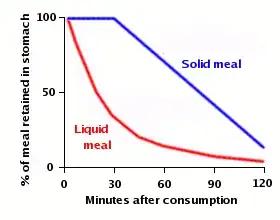The medical way to ask your question is "What are the pharmacokinetics of pyridoxine (B6 version that you're likely to take)?"
Then that brings us to both primary and secondary sources, along with a good animal model study.
"The greatest portion reaches the brain" will likely be shortly after the peak serum concentration, or Cmax. The amount of time it takes for a drug to get to Cmax is Tmax. There is going to be some variability in Tmax based on age, sex, weight, diet, and B6 formulation. A comparison of two formulations directly found a range of 1.25 to 1.44h, which is a little tighter of the general range of 1-2 hours.
I didn't find a source that showed peak concentrations in CNS tissue or that looked at the delay in B6 crossing the blood brain barrier (which it will readily given its solubility), but there is little reason to suspect that it is too delayed thereafter. Animal studies have shown that the vast majority (80-90%) of B6 is stored in muscles and the liver, so even though the peak concentration for the CNS will follow Cmax, most of the B6 will not end up there.
Your next two questions are mostly implicitly answered in the first question. The peak and greatest portion are likely to be very close together (I couldn't find any evidence of delayed metabolism in the CNS). But expanding on your third question a little, it gets there via the blood, which is pretty standard for most drugs/nutrients/vitamins in humans. As far as taking it from swallowing the pill, it then continues along the digestive tract to the small intestine. Mostly in the jejunum, but somewhat in the ileum (2nd and 3rd part of small intestine) it passively diffuses into the blood, where it circulates through the heart and eventually to your brain.
Eating more food may prolong the time the pill is in the stomach, thereby delaying the time that the B6 is absorbed in the small intestine. Generically this is called gastric emptying, and an approachable site on the subject can be found here. Even though I'm pretty sure this is made up data to estimate the point, I think it's worth duplicating their time graph:

I would like to point out, that this is not something that you will be able to time on a stopwatch and fine tune. Any of these values could easily vary by an hour. I also want to point out that taking high doses of B6 can be habit forming, and that the study on dreaming cited in the wiki is far from convincing. Further it was published in a relatively low impact journal. I'm not saying it isn't true, but I don't like the idea of people super dosing B6 for recreational dream use.
